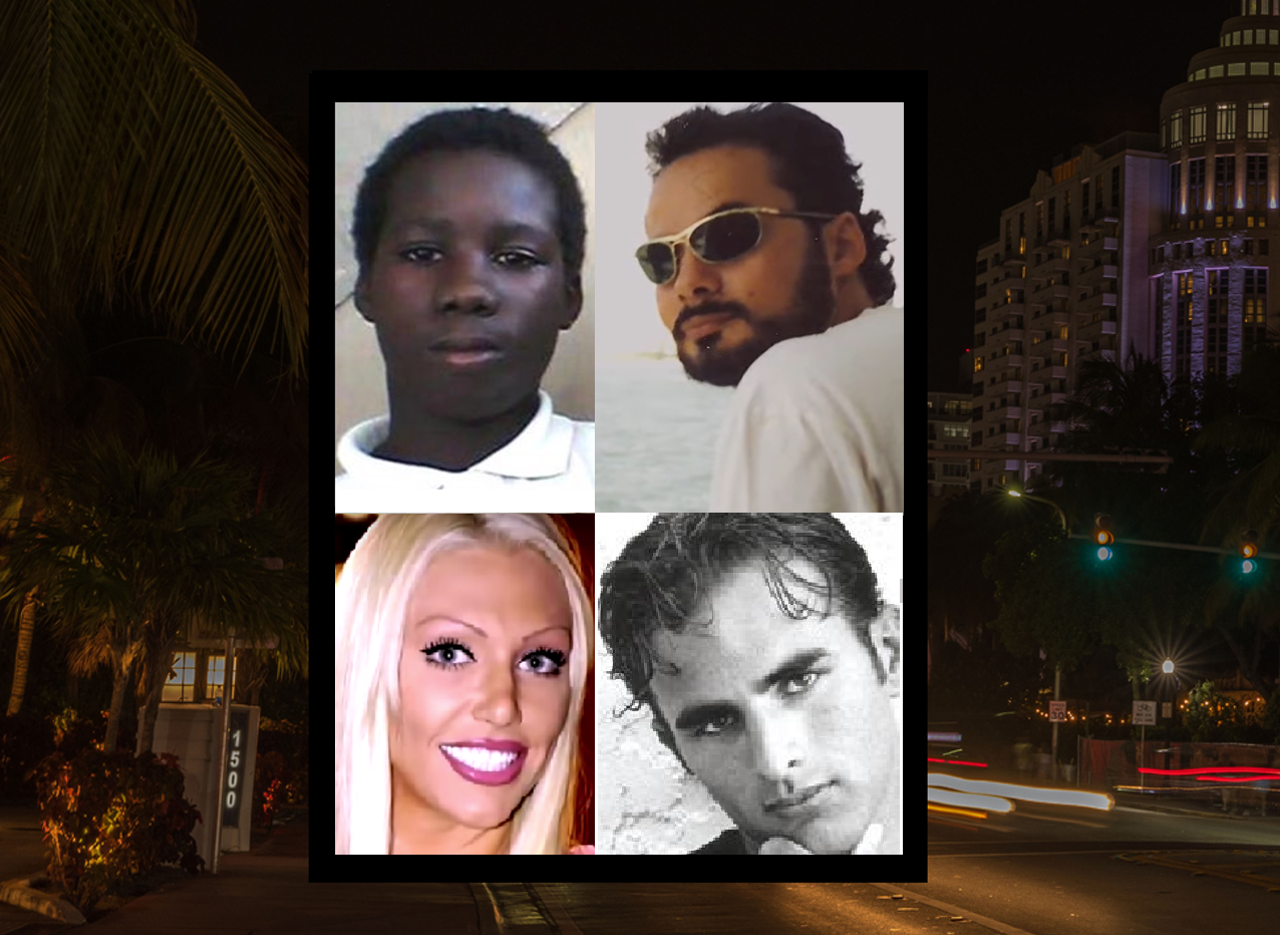
New Times collage

Audio By Carbonatix
Underneath the veneer of swaying palm trees and sandy beaches, South Florida communities have doubled as the scene of some of the most vicious crimes on record.
If you walked down the wrong road on the wrong day, you might’ve come across something unspeakable: victims’ bodies stuffed in suitcases, human appendages floating around Biscayne Bay, or noxious smoke billowing from a Miami dumpster with the body of an aspiring model burning inside.
Those are just a few of the brutal homicide cases that confounded local detectives for years, and, with the exception of the so-called “Suitcase Murders,” they remain unsolved to this day. There are about 900 open homicide cases in the City of Miami proper, while the Miami-Dade County Police Department has about 2,500 murder cases that remain unsolved, police say.
It’s not uncommon in a large U.S. metro area to have hundreds of unsolved homicides pile up over the decades, though the breadth of open cases feels especially unsettling in a place so bent on presenting itself to outsiders as paradise. While South Florida is constantly rebuilding, painting over itself, and tearing down historic sites in an effort to pave over the past, memories of the cities’ darkest moments remain imprinted in the minds of residents.
Moreover, for many families of cold case victims, the grief remains unbearable no matter how many years have passed, with the pain of loss compounded by the sense justice was never served.
The spotlight shined on the tragedies is a double-edged sword for those close to the victim. When a case spawns headlines, family members hold out hope that the attention will help bring the killer to justice. But the airing of the morose details, and coverage of potentially unflattering elements of the victim’s life, often stir up frustration and resentment, which can constantly resurface if the case remains unsolved.
“The majority of survivors’ experiences with the media were negative in nature, and continued years after the original homicide. The media’s goals of viewership and common sensationalism of violent crime are in direct contrast with the survivors’ ability to grieve,” one survey of cold case victims stated.
Homicides per capita in the U.S. have dropped significantly since a long-lasting crest from the 1970s to the ’90s. But the nationwide clearance rate for murders (a measure of how often homicide cases are solved or yield an arrest) has plummeted in the meantime, falling 20 percent over the last five decades. Researchers have suggested a number of factors: reduction in witness cooperation, more demanding workloads in detective units, higher standards for arrest, and a lack of police resources in underserved communities plagued by violence.
Low murder-case resolution rates hold true in Miami-Dade County, where homicide clearance fluctuated between roughly 45 and 60 percent from 2015 to 2020, according to a CBS Miami report. The clearance rate in neighboring Broward County was higher in that period, ranging from just under 50 percent to more than 70 percent.
We combed through our archives and recapped some of South Florida’s most disturbing cold cases, some of which New Times covered through long-form pieces and interviews with family members and local officials. Below are the stories of R.J. Lockwood, Omar Laparra, Paula Sladewski, John Agudelo, and Alder Hill.
Miami and Miami-Dade police did not respond to requests for comment on this story, but both departments welcome tips. You can remain anonymous. There is no statute of limitations on murder.
Call Miami-Dade Crime Stoppers at (305) 471-8477 or Broward Crime Stoppers at (954) 493-8477.
The unsolved cases are listed in chronological order, followed by a recap of Broward County’s “Suitcase Murders.”
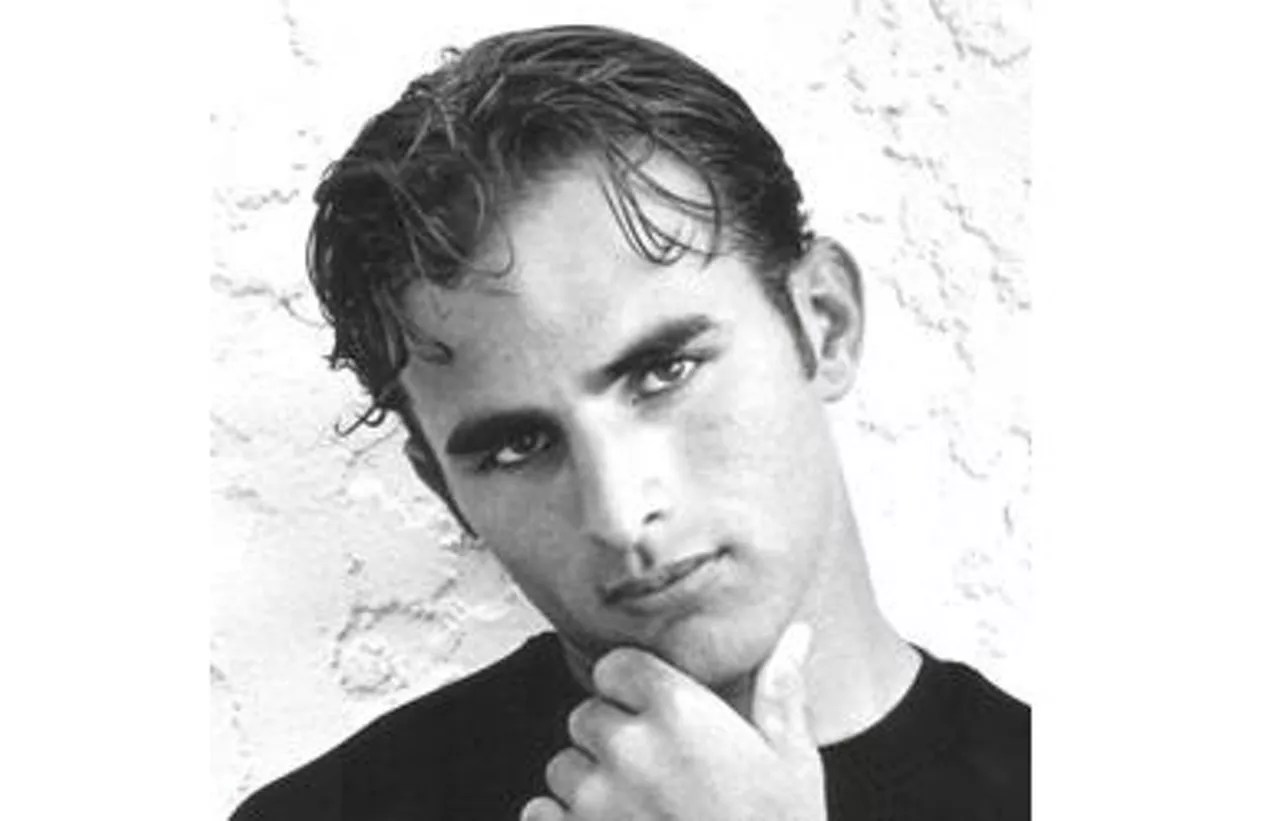
R.J. Lockwood lived in Los Angeles and Washington, D.C., before moving to Miami in late 2003. Detectives never found the shooter who killed the 27-year-old in his apartment in January 2004.
Screenshot via findagrave.com
R.J. Lockwood
Virginia native R.J. Lockwood was known as an affable, free spirit who moved to Miami in 2004 and did odd jobs at area nightclubs. Known as DJ Skywalker, friends recalled that anywhere he laid his hat was his home but that he eventually landed his own digs in an Overtown artists’ space.
The 27-year-old Lockwood soon met a girl on MySpace, and the two planned to spend their lives together. There was a snag though: His girlfriend was still living with her former boyfriend, a bouncer. Lockwood gave his gal until early January to break things off, and all alone on New Year’s Eve, he reportedly told his friends he was going to ring in the new year with a small gathering before starting a new life with his belle.
Lockwood’s plan for a fresh start never came to fruition, as he was found lying dead on his living room floor on January 4, 2004, fatally wounded from a gunshot to the chest. There were two bottles of Corona on the counter that friends said was suspicious because Lockwood usually drank cheap beer. That is, unless someone else brought it, his friends said. But who? Police are still searching for Lockwood’s killer.
Omar Laparra
A bicyclist pedaling along the 79th St. Causeway called police in June 2009 after he noticed a suspicious bag bobbing about Biscayne Bay, which was found to contain a man’s leg. Then, more bags containing human appendages and other body parts were found washed up near the seawalls of the bay.
The victim was identified by police as Omar Laparra, 21, a Guatemalan construction worker, who had been last seen leaving a club on Calle Ocho with a Hispanic man in his mid-30s. Detectives said he was seen being dragged from a nearby dollar store into a Honda sedan early that morning.
Miami police staged a re-enactment of Laparra’s last known encounter for New Times and other media in 2009, with hopes someone would have a “sudden flash of memory about that night” and help police find the killer. Fifteen years later, police are still waiting for a call.

Paula Sladewski and her boyfriend had a tumultuous relationship, with allegations of domestic violence, before she was found dead in Miami in January 2010.
Sccreenshot via Investigation Discovery
Paula Sladewski
Aspiring model Paula Sladewski had to be identified by her dental records after her body was found inside a flaming dumpster in a North Miami industrial area in January 2010.
Sladewski had visited Miami Beach from Michigan on a New Year’s Eve break to go to a Lady Gaga concert with her boyfriend, Kevin Klym. On January 3, 2010, after a few days of clubbing, Klym got bounced from Club Space after an argument with Sladewski, who remained at the venue until 7:20 a.m., at which point she left the club with a man following behind her, surveillance tape showed. Her body was found in the dumpster fire later that day, and cops remain on the hunt for the killer.
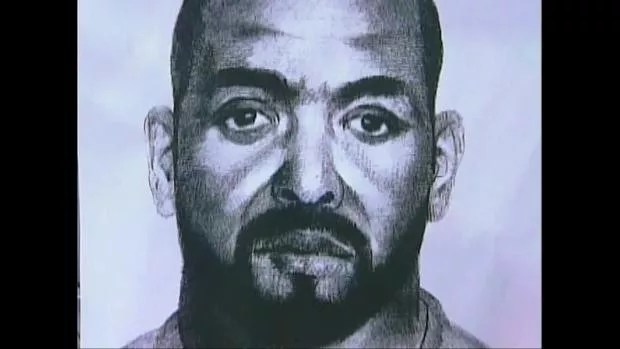
Investigators put out this sketch of a person of interest in the Paula Sladewski case
Police sketch
Police released a sketch based on the account of a witness who claimed to have seen a man departing a parking lot near Space with Sladewski. A detective described him as a heavyset Black or Hispanic male with a goatee.
Sladewski’s stepfather made a public statement claiming she had been afraid of Klym, and her mother pointed to a past domestic incident in which Klym was accused of breaking Sladewski’s nose in an assault just one month before the murder. But detectives reportedly cleared Klym and said there’s a good chance that whoever killed Sladewski was familiar with the section of North Miami where her body was dumped.

Miami Springs resident John Agudelo was gunned down outside his apartment on December 17, 2010.
Crime Stoppers photo
John Agudelo
John Agudelo volunteered with a 12-step program located in an alley cubby hole off Curtiss Parkway, about two blocks from his home. He helped many people in Miami Springs and surrounding communities with counseling and support as they beat addiction to drugs and alcohol, his sister told New Times.
Agudelo, who moved to Miami with his family as a child in 1971, had a reputation for stepping up and caring for his family members in hardship. His sister, Rocio Agudelo, recalled how he tried to be a father figure for her children after their dad died when they were very young.
“He always took care of people. He always wanted to protect you,” Rocio said in a 2021 Crime Stoppers segment. “Any time I had problems, he was there. He always had a shoulder for me to cry on.”
Agudelo, 48, was ambushed by gunfire around 6 a.m. on Dec. 17, 2010, in a quiet Miami Springs neighborhood after he locked his door and walked toward his apartment complex’s gate, police said. The spring-loaded gate was known to clank loudly when closed, neighbors told police. That morning, no one heard the gate close, Miami-Dade Police said.
Police suggested that the suspect, or suspects, may have known Agudelo personally or had specific knowledge of the layout of his two-story apartment complex.
“John was walking toward the exit at the front of the courtyard that leads out to Esplanade Drive. It was at that time that he was approached in the dark by an unknown subject and was shot several times,” Miami-Dade Detective Javier Pineda said in a 2013 police-produced re-enactment video.
His obituary said he was survived by his parents and one son. “He lived life to the fullest and dedicated himself to helping others,” the passage reads.
Alder Hill
Fifteen-year-old Alder Hill was found shot to death in January 2016 near NW Ninth Avenue and 69th Street in Miami’s Liberty City neighborhood.
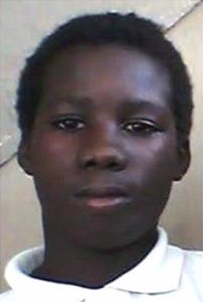
Police have yet to identify the shooter who killed Alder Hill, 15, in Liberty City in January 2016.
Miami Police Department photo
According to police, surveillance video from Miami Northwestern Senior High School captured Hill riding his bicycle nearby the night he was executed. Hill had no criminal record and was described as a kind, sensitive boy. “His only mistake was riding a bike, maybe in the wrong neighborhood,” a Miami police officer said.
Police said a crowd of people from a nearby street party were congregating around the teenager’s body when officers arrived on the scene. While several people may have witnessed the murder or its aftermath, no one came forward to single out a suspect in the immediate aftermath of the killing, the Miami Herald reported.
As police worked Hill’s crime scene, they heard nearby gunshots and raced to find Jaquan Leonard, a 21-year-old Miami Northwestern alumnus, dead on a corner near the 700 block of NW 65th Street. Police didn’t have hard evidence that the killings of Hill and Leonard were connected, but they did not rule it out at the time.
According to a Miami Herald report, one of Hill’s aunts said in the wake of his death, “We just want justice for my nephew.”
“[My sister] got to get up in the morning and tell her kids Alder isn’t here. She can’t even cry anymore,” the aunt said.
Solved: The Suitcase Murders
Editor’s note: Unlike the other homicides on this list, police say they know precisely who perpetrated the atrocities in the “Suitcase Murders” – one of South Florida’s most widely known cold cases.
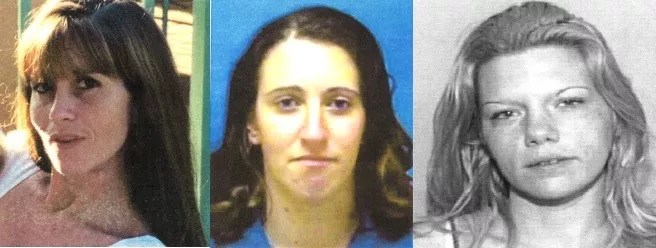
From left: Kim Dietz-Livesey, Sia Demas, and Jessica Good. The Broward Sheriff’s Office says it has confirmed their killer was a Brazilian man, Roberto Wagner Fernandes, who fled the country after Good’s murder.
Broward Sheriff’s Office photo
On June 20, 2000, an electrician and his girlfriend were driving in rush hour traffic along Flamingo Road when they spotted a piece of dark brown luggage near the shoulder in Cooper City. It looked to be in good condition, so they pulled over to take a closer look. Upon opening the suitcase, the boyfriend recoiled in horror. Inside were the remains of 35-year-old Kim Dietz Livesey.
About a month prior, Dietz Livesey’s husband had filed for divorce citing “drug abuse problems and suicidal tendencies by [the] mother” following two years of marriage. Dietz Lively was arrested not long after on a solicitation charge. Once she was released from jail on June 13, 2000, she agreed to meet her ex at an Alcoholics Anonymous meeting at 10 p.m. near the old INS building at 79th Street and Biscayne Boulevard. She never showed.
A grisly discovery with close parallels to Dietz Livesey’s case took place in Dania Beach two months later.
The remains of Sia Demas, 21, were found in a duffel bag on August 9, 2000, only 50 yards from the Broward County Medical Examiner’s Office. A morgue supervisor told New Times that the body was so close that he “ended up wheeling a gurney out…and took her inside.” Some 30 investigators were called in from Miami and Broward counties, who sought assistance from the FBI to help profile the killer.
Like Dietz Livesey, Demas was struggling to put a dark episode in her life behind her. She disappeared not long after her release following 18 months in jail for probation violations. She was last seen on August 8, after she climbed into a dark-colored Chevy 1500 truck driven by an approximately 40-year-old white man with a stocky build, whom a witness said waived a wad of cash in front of Demas. Twenty-four hours later, Demas’ body was found in Dania Beach.
According to the Broward Sheriff’s Office, the break came in 2011 when investigators matched DNA from the case of Miami murder victim Jessica Good to the DNA profile of an unidentified suspect from Demas and Dietz Livesey’s cases. The forensic evidence implicated one Roberto Wagner Fernandes, a Brazilian citizen who allegedly fled to his home country while police were eyeing him in Good’s murder. Further arousing suspicion, he had been charged with murdering his wife in the mid-1990s in Brazil. (He was reportedly acquitted of the killing on the basis of a self-defense claim.)
When Broward detectives tried to track down Fernandes, they learned he had been reported dead in a plane crash in South America in 2005. Years passed before investigators confirmed as much. But beginning in late 2020, a process to dig up his grave and exhume his body to test his DNA was carried out, and the Broward Sheriff’s Office announced that the dead man’s genetic info indeed matched the DNA profile from the three murders. Investigators say fingerprints taken when he was charged with murdering his wife also matched those found at the Florida crime scenes.